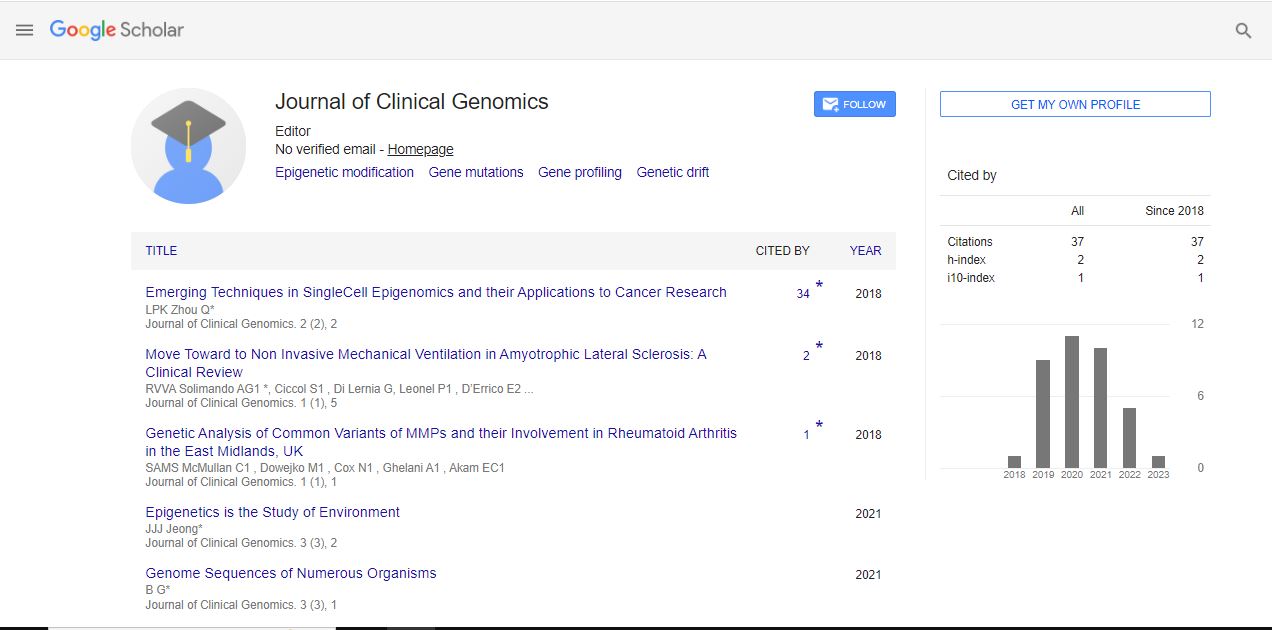Perspective, J Chromatography Res Vol: 6 Issue: 1
Importance, Measurement and Applications of Poresize in Chromatography
Marina Cavalieri*
1Department of Chemistry, University of Catania, Catania, Italy
*Corresponding Author: Marina Cavalieri
Department of Chemistry, University of
Catania, Catania, Italy;
E-mail: massimino@unict.it
Received date: 15 February, 2023, Manuscript No. JCGR-23-95902;
Editor assigned date: 20 February, 2023, PreQC No. JCGR-23-95902 (PQ);
Reviewed date: 10 March, 2023, QC No. JCGR-23-95902;
Revised date: 28 March, 2022, Manuscript No JCGR-23-95902 (R);
Published date: 07 April, 2023, DOI: 10.4172/jcgr.1000048.
Citation: Cavalieri M (2023) Importance, Measurement and Applications of Poresize in Chromatography. J Chromatography Res 6:1.
Keywords: Chromatography
Description
Pore size is an important characteristic of porous materials that determines their properties and applications. These materials are ubiquitous in nature and have significant technological applications in various fields, such as catalysis, separations, energy storage, and biomedical applications. The properties of porous materials are mainly determined by their pore size, shape, distribution, and connectivity. It is an important parameter that influences the adsorption, diffusion, and transport of molecules in porous materials. The pore size distribution also affects the mechanical and thermal properties of the porous materials. The importance of pore size in porous materials arises from its effect on the accessibility, selectivity, and capacity of the materials. The size of the pores determines the types of molecules that can access the pore space and the rate at which they diffuse through the material. It also influences the selectivity of porous materials for specific molecules, as smaller pores can selectively adsorb smaller molecules. The capacity of the porous materials is also determined by the pore size, as larger pores can accommodate more molecules. It is an important parameter in chromatography, particularly in methods that rely on size exclusion. In chromatography, the stationary phase is typically composed of porous particles, which can be made of a variety of materials, such as silica or polymers. The pores in these particles can be of varying sizes and are important in determining the separation properties of the column.
In Size Exclusion Chromatography (SEC), also known as Gel Permeation Chromatography (GPC), the stationary phase is designed to separate molecules based on their size. The larger molecules are excluded from entering the pores of the particles and therefore elute first, while the smaller molecules enter the pores and take longer to elute. The pore size of the particles used in SEC is typically chosen based on the size range of the molecules being analyzed. In other types of chromatography, such as Reversed-Phase Chromatography (RPC), It is less important as separation is based on differences in polarity rather than size. However, the pore size of the stationary phase can still impact the efficiency of the separation and the resolution of the peaks obtained. The applications of porous materials with different pore sizes are diverse and include catalysis, adsorption, separations, energy storage, and biomedical applications.
The measurement of pore size is an important step in the characterization of porous materials. Several methods are available for its measurement, including gas sorption, liquid intrusion, mercury intrusion porosimetry, and small-angle neutron scattering. Gas sorption is a commonly used method that measures the surface area and distribution of porous materials based on the adsorption and desorption of gases on the surface of the materials. Liquid intrusion is another method that measures porous materials based on the displacement of liquid into the pore space. Mercury intrusion porosimetry is a technique that measures the pore size distribution of porous materials based on the intrusion of mercury into the pore space under pressure. Small-angle neutron scattering is a non-destructive method that measures and determines shape of porous materials based on the scattering of neutrons by the pore space.
 Spanish
Spanish  Chinese
Chinese  Russian
Russian  German
German  French
French  Japanese
Japanese  Portuguese
Portuguese  Hindi
Hindi 